#jade fraser
Explore tagged Tumblr posts
Text





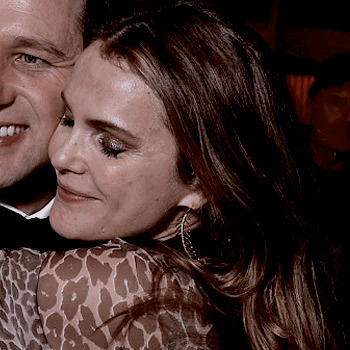

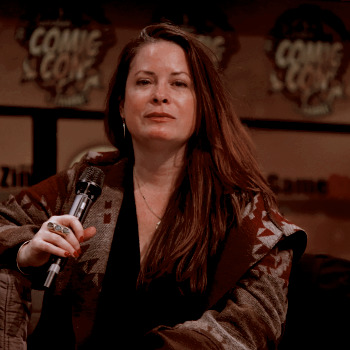
Random Actress icons
‒ like or reblog if you save
#rachel skarsten#rachel skarsten icons#salma hayek#salma hayek icons#jade fraser#jade fraser icons#jordana brewster#jordana brewster icons#jennifer lopez#jennifer lopez icons#keri russel#keri russell icons#barbara mori#barbara mori icons#zoe saldana#zoe saldana icons#holly marie combs#holly marie combs icons#random actress icons#random actress#random icons#icons
27 notes
·
View notes
Text

KILLERS OF THE FLOWER MOON 2023
Oh, yeah? I mean, there might be a public outcry for a while. But then you know what happens? People forget. They don't remember. They don't care. They just don't care. It's just gonna be another everyday, common tragedy.
#killers of the flower moon#2023#leonardo dicaprio#lily gladstone#robert de niro#jesse plemons#tantoo cardinal#john lithgow#brendan fraser#cara jade myers#janae collins#jillian dion#jason isbell#william belleau#louis cancelmi#scott shepard#brent langdon#tommy schultz
5 notes
·
View notes
Text
Killers of the Flower Moon
Killers of the Flower Moon [trailer]
When oil is discovered in 1920s Oklahoma under Osage Nation land, the Osage people are murdered one by one - until the FBI steps in to unravel the mystery.
Very important story, and I'm glad someone with the skills and the prominence of Scorsese told it to give it maximum visibility. But given its running time it didn't contain a lot of surprises.
I was wrong footed for a while early in the film since I took Mollie's question for Ernest if he's scared of his uncle as a sign that she knows or at least has a strong suspicion that he's behind all the killings. So to me marrying simpleton Ernest didn't make a lot of sense.
I think I audibly groaned when a sequences of events plays out towards the end that could be straight from one of Scorsese's organised crime films.
#Killers of the Flower Moon#Martin Scorsese#Leonardo DiCaprio#Robert De Niro#Lily Gladstone#Jesse Plemons#Tantoo Cardinal#John Lithgow#Brendan Fraser#Cara Jade Myers#William Belleau#Louis Cancelmi#recommended
2 notes
·
View notes
Text
. Can you find the wolves in this picture?
Killers of the Flower Moon, Martin Scorsese (2023)
#Martin Scorsese#Eric Roth#Leonardo DiCaprio#Robert De Niro#Lily Gladstone#Jesse Plemons#Tantoo Cardinal#John Lithgow#Brendan Fraser#Cara Jade Myers#Janae Collins#Jillian Dion#Jason Isbell#William Belleau#Louis Cancelmi#Scott Shepherd#Tatanka Means#Rodrigo Prieto#Robbie Robertson#Thelma Schoonmaker#2023
4 notes
·
View notes
Text

NOTE: This write-up contains full spoilers after the fifth paragraph.
Killers of the Flower Moon (2023)
Leading up to the theatrical release of Killers of the Flower Moon, director Martin Scorsese went on Turner Classic Movies (TCM) to present an evening of films that inspired his approach to his latest work. The first film of that evening's primetime schedule was the short silent film The Last of the Line (1914), directed by Jay Hunt. That Western short film starred a cast of almost entirely composed of Oglala Lakota actors alongside Japanese actor Sessue Hayakawa (a major silent film star) playing the chief's son, Tsuru Aoki as an American Indian woman, and various white actors as U.S. Cavalrymen. It is an unusual piece, as it is presented almost entirely from the Lakota chief's (Joe Goodboy) perspective. Both Killers of the Flower Moon and The Last of the Line tell tales in which the ways of white Americans subsume the traditions of and irrevocably traumatize American Indians.
Unlike The Last of the Line, Killers of the Flower Moon, distributed by Paramount and Apple, is based on actual events. Adapting David Grann’s nonfiction book of the same name, Killers of the Flower Moon concentrates on the Osage Reign of Terror – a series of murders of Osage tribespeople, relations, and allies in 1920s Oklahoma. In addition to the lives of the Osage and the perpetrators of these crimes, much of Grann’s book also documents the rise of the Bureau of Investigation (BOI, which became the FBI), as they were instrumental in the investigation in a fraction of these murders. By his admission, Martin Scorsese said that his and Eric Roth’s (1995’s Forrest Gump, 2021’s Dune) initial drafts of the screenplay concentrated too largely on its white characters. Recalling his viewing of The Last of the Line back in his university days, Scorsese thought it wise to consult with members of the Osage Nation (Chief Geoffrey Standing Bear was especially helpful) over how he might better depict Osage perspectives, and empower their voices.
Scorsese is not entirely successful in this respect, and I think he would be the first to agree that he could have highlighted the Osage characters with greater attention, despite the commercial and executive constraints on this production. Scorsese would also probably be the first to agree that he is not the most appropriate person to tell the story of the Osage Reign of Terror, as he all but acknowledges in the film’s closing moments. In spite of this, Killers of the Flower Moon represents extraordinary moral and personal growth from Scorsese in how he depicts criminals and their victims. It is a delicately made film that interrogates how avarice and casual racism can lead to unconscionably serial violence – a saga not exclusive to any one American Indian tribe.
For generations before Europeans sailed to the New World, the Osage people roamed the southern Great Plains, in what are now the states of Arkansas, Missouri, Kansas, and Oklahoma. The annihilation of the American bison and the Indian Wars led to the Osage’s removal to a reservation on land that the U.S. federal government considered worthless (that reservation is coterminous with Osage County, Oklahoma). The discovery of oil on Osage territory in 1894 saw the Osage, by the 1920s, become some of the richest people per capita in the United States. After that historical context, we find World War I veteran Ernest Burkhart (Leonardo DiCaprio) returning stateside to take a job with his uncle, William King Hale (Robert De Niro), on Hale’s vast ranch. Hale, an important force in local affairs, is a friend to the Osage – he even haltingly speaks their language. Some time after, Ernest begins courting Mollie Kyle (Lily Gladstone), a full-blooded Osage who, along with her family members, owns various oil headrights. Ernest and Mollie marry. Following their marriage, a rash of homicides of wealthy Osage sends torrents of fear through the tribal community – attracting the federal government’s attention after only far too much death.
The sizable ensemble cast also includes Jesse Plemons as Tom White, a former Texas Ranger turned BOI Agent; Tantoo Cardinal as Lizzie, Mollie’s mother; John Lithgow and Brendan Fraser as the competing attorneys in the murder trials; Cara Jade Myers, Janae Collins, and Jillian Dion as Mollie’s sisters Anna, Rita, and Minnie. Only Indigenous Americans played the indigenous roles, speaking or not – also including William Belleau, Tatanka Means, Everett Waller, and the late Larry Sellers.
It is not often that I cite a film for a lack of exposition, but that is a concern early on here. Scorsese and Roth’s screenplay poorly explains a mechanism contributing to the motivations of these murders. In response to sensationalized reporting from white-owned news media about the Osage’s wealth, the federal government forced full-blooded (and some partial-blooded) Osage to enter into financial guardianships – effectively deeming them a second-class citizen or an “incompetent”, unable to spend a certain amount of money without their white guardian’s permission. In a film that progressively unfolds the plotting of its perpetrators, this is among the most malignant practices in asserting white control over the Osage. The lack of much explanation here is an unnecessary complication for non-readers already attempting to keep track of the dramatis personae and digest the various subplots of the film’s sprawling 206 minutes.
Additionally, the film does not concentrate on its Osage characters to the extent some would prefer. As various Indigenous Americans have commented, such an approach by Scorsese and Roth ensures that the film’s intended audience are all those who are not indigenous. We see little of Osage life outside of moments of racial abuse, violence, and funerals. Killers of the Flower Moon makes no attempt to explain how the formally educated Osage of Mollie’s generation (including Mollie herself) were taught in schools that forbade the speaking of the Osage language, attempting to “reform” American Indian children to fit into white society.
Yet the audience glimpses other moments: naming ceremonies, the merger of Catholic and Osage traditions in significant life events (such as marriage), and even the ritual dance in the film’s final moments. In these fragments of Osage customs, it is also noticeable how much these naming ceremonies, marriages, funerals, and other more mundane moments become less grounded in the old practices over time. The bittersweet moment where Mollie’s mother, Lizzie, meets and walks away with her departed ancestors is the moment where, for this film’s purposes, the Osage’s disconnection to the past becomes pronounced. Mollie and her fellow Osage attempt to adhere to those customs, but, with the passing of elders like her mother, the Osage ways from time immemorial are all but consigned to the history books. The depiction of the Osage is always respectful, avoiding damaging and noble stereotypes.
Despite the lack of deeper Osage representation, this is not to say the filmmakers waste an excellent Lily Gladstone as Mollie (the film’s moral center). As Mollie, who has diabetes, begins to suffer from the effects of intentionally tarnished batches of insulin, Gladstone’s involvement with the narrative recedes in the film’s closing act. But before that, Gladstone plays Mollie wonderfully with self-assured posture and gait, sly and understated humor, and a piercing silent glance at critical moments. Juxtaposed with DiCaprio’s portrayal of Ernest, one has to wonder how Mollie falls for him. If Gladstone’s performance reminds some of Olivia de Havilland’s in The Heiress (1949), that is no coincidence (Gladstone also physically resembles de Havilland somewhat). Scorsese’s portrayal of Mollie and Ernest’s relationship contains revelations and moments similar to that found in The Heiress, and that film was an invaluable reference for Scorsese and his lead actors during production.
This is not so much a glimpse into the Osage way of life in 1920s Oklahoma as it is an interrogation of how white American racism (the perpetrators, at least in this treatment, are all white) led to a series of murders committed and discussed nonchalantly. Scorsese’s Killers of the Flower Moon is more concerned with how Ernest Burkhart’s and William Hale’s obsession for wealth leads them to conspire to kill Osage tribespeople for their oil headrights. Hale is the ringleader in the murders of at least two dozen Osage (De Niro is appropriately loathsome despite playing someone who should be middle-aged); the easily-manipulated Ernest (a solid outing by DiCaprio) one of many conspirators abiding by Hale’s orders.
Scorsese has long depicted American organized crime in films like Mean Streets (1973), Goodfellas (1990), Casino (1995), and The Irishman (2019). Since The Departed (2006), there has been a noticeable evolution in how Scorsese frames his criminal protagonists. All of these films, to some extent, concern themselves with how unchecked male egos – rife with delusions of self-grandeur and sexual gratification – descend into violence and moral depravity. Yet over the last decade and a half in films like The Departed and The Wolf of Wall Street (2013), but especially The Irishman, Scorsese has leaned into his Catholic upbringing to express his characters’ sense of profound guilt. Whether or not there is true repentance in the face of their actions stirs open questions and vociferous debates about the morality of these characters or, sometimes, Scorsese’s filmmaking itself.
As dead flies give perfume a bad smell, so a little folly outweighs wisdom and honor. Ecclesiastes 10:1
It does not happen often in the film, but Scorsese shows both De Niro’s Hale, DiCaprio’s Ernest, and their fellow conspirators swatting away flies multiple times in Killers of the Flower Moon – usually just after or before committing or discussing a murder or some other heinous action. Flies appear to indicate the corrupted souls of this film, a Biblical personification of sin and lack of remorse. The white characters' casual conversations about violence against the Osage and their refusal to take responsibility for all of their misdeeds – including Ernest, despite testifying against his uncle at the federal trial – suggests that such attitudes towards American Indians were widely-held. Though the U.S. government is no longer engaging in a formal war against Indigenous Americans and Klansmen no longer parade down the streets of Osage County without anyone blinking an eye, a violent epidemic against Indigenous Americans still persists.
The tremendous efforts of BOI Agent Tom White and the federal prosecutors to bring Hale, Ernest, and their associates to justice were a drop in the bucket in respect to sheer amount of suspicious deaths among the Osage from the late 1910s to the early 1930s. Scores, perhaps hundreds, of other murders or Osage tribespeople were never investigated or listed inaccurately as accidents, suicide, or reasons unknown. One aspect of the narrative that Scorsese holds over the book’s original author, David Grann, is that Scorsese’s treatment repudiates any notion of a white savior. Scorsese downplays White’s role, in comparison to his treatment in Grann’s book (which, because it is also a chronicle of the rise of what would become the FBI, reads almost like a procedural). It is the Osage who save themselves – they are the ones who gather the money to lobby and pay for the federal investigation.
Scorsese’s collaborators behind the camera provide incredible artistry. Mexican cinematographer Rodrigo Prieto (2000’s Amores perros, The Irishman) has had a banner year, alongside his work on Barbie (2023). Prieto demonstrates a visual mastery in a variety of scenarios: widescreen landscapes of the prairies with oil derricks far in the background, sweeping crane and dolly shots in scenes teeming with activity, and tense closeups of white and Osage faces. But what would Prieto’s work be without editor Thelma Schoonmaker (1980’s Raging Bull, 2011’s Hugo)? Schoonmaker, a Scorsese regular, can take what, on paper, should be a meandering narrative and turn it into a movie with a distinctive rhythm and storytelling efficiency – even if it runs almost three-and-a-half hours. To keep Killers of the Flower Moon’s 206 minutes (without intermission, which I find ableist even though I never left my seat in the cinema) comprehensible and never tedious is among Schoonmaker’s crowning achievements an editor.
Meanwhile, costume designer Jacqueline West (2001’s Quills, 2022’s Dune) asked Julie O’Keefe, an Osage Nation member, to serve as a costume cultural adviser. Together, the two called upon the Osage Nation to help in researching what the Osage would have worn in the 1920s. West, for her work in The Revenant (2015), had previously undertaken research on the clothing of Plains Indians. But collaborating with O’Keefe made West realize how the costume design in Killers of the Flower Moon needed to be specifically Osage. Osage artisans sewed together all the Osage blankets, garments, and shawls seen in this film. The unusual collaboration between West and O’Keefe lends to Killers of the Flower Moon a visual authenticity magnificent to behold.
When it comes to music in a Martin Scorsese movie, Scorsese tends to rely on preexisting music to establish the setting. Noteworthy original scores are not a given in Scorsese films (Bernard Herrmann’s score to 1976’s Taxi Driver and Howard Shore’s for Hugo the outliers). Robbie Robertson (guitarist/songwriter for The Band, in addition to his solo Americana music and rock career) is the composer here, but his score barely warrants notice. Like O’Keefe, Robertson also collaborated with Osage musicians to implement their musical traditions with his blues-influenced electric guitar. The electric guitar and Hammond organ lines might, in other hands, be glaringly anachronistic and inappropriate for the purposes of a project like Killers of the Flower Moon. However, Scorsese elects for minimal use of music, relegating Robertson’s score as nothing but aural wallpaper to fit a scene – without narrative or thematic development, in service of “vibes”. Most modern film critics might consider this “effective” composing; I deem it uninteresting in the context of the movie and otherwise. If anything, the music that stands out most in this film was composed and performed by the Osage themselves.
The criminals inhabiting a Scorsese movie used to, despite their deeds, possess a swagger to their criminality. Since The Irishman, that criminal swagger is no longer. With the depiction of the Osage characters and their loved ones, Scorsese offers the viewpoints of the victim’s survivors to a substantial degree for the first time. Though perhaps not as developed as one might wish, to include these views is a sort of personal artistic penitence for Scorsese.
In the penultimate scene of Killers of the Flower Moon, we find ourselves in a production of the radio show The Lucky Strike Hour, with the performers wrapping up an episode covering the Osage Reign of Terror. The Lucky Strike Hour was produced in conjunction with the BOI/FBI to dramatize real-life cases. The program lionized J. Edgar Hoover (who headed the BOI/FBI from 1924-1972) and glorified the processes of the Bureau and policing at-large. One by one, the performers read off the fates of the main figures to wind down the epilogue: the Shoun brothers; Byron Burkhart (Ernest’s younger brother); Ernest; Hale. Finally, up steps Martin Scorsese to the microphone, breaking the fourth wall. He reads a few sentences about Mollie. Mollie Burkhart remarried after divorcing Ernest and died of diabetes in 1937. Despite the murders of her sisters, potential murder her mother, and Ernest’s confession, her obituary made no mention of the Osage murders.
Scorsese looks at the audience.
Cut to a modern-day Osage ceremony. So they remain.
For more than a century, Hollywood films concerning American Indians like The Last of the Line and Killers of the Flower Moon have been told by non-indigenous storytellers. Similar situations exist in other narrative artforms. These works have almost always been narratives about the damage done to Indigenous Americans’ lives due to the encroachment of non-indigenous people. As honestly and nobly as Jay Hunt and Martin Scorsese attempted to make a movie about American Indians, there is a moral dilemma in presenting Indian suffering as a form of entertainment. Scorsese acknowledges this in his reading of Mollie’s epilogue, reclaiming that space from the radio show away from J. Edgar Hoover and the BOI/FBI.
In a film industry so rife with performative nods to diversity without due action, he also must have intuited this dilemma of depicting Indigenous American suffering when he first approached the Osage Nation for assistance on this movie. So why bother to make Killers of the Flower Moon if he is not the most suitable person to tell a story that concerns the Osage?
My answer might not be the one you wish to read. The environment that fosters narrative art, in any medium, prefers dramatic obligations over moral ones. Scorsese’s Killers of the Flower Moon is an attempt to bend that dynamic – to expose, in harsh lighting, the complicity of those who facilitated these murders and those who, even to the slightest degree, benefitted from these tragic events. Those beneficiaries include Martin Scorsese and his non-indigenous cast and crew for making this film. Perhaps this sort of moralism is too absolute for you, the reader. Yet, with those final moments of Killers of the Flower Moon, such questions were certainly on the filmmakers’ minds. It is a perilously risky ending that I found deserved and poignant.
The Osage of Reign of Terror was once an American media sensation. Before the publication of Grann’s book and in the century since, it has largely been forgotten outside members of the Osage Nation. It is valuable to debate who should author something like Killers of the Flower Moon (the book and the movie) and how they do so. The greater good is that we learn about the inhumanity of these murders and the humanity of the victims and those who tried to stop these killings. The winds across the Oklahoma prairie whisper in remembrance, and the least we should do is listen.
My rating: 9.5/10
^ Based on my personal imdb rating. My interpretation of that ratings system can be found in the “Ratings system” page on my blog. Half-points are always rounded down.
For more of my reviews tagged “My Movie Odyssey”, check out the tag of the same name on my blog.
#Killers of the Flower Moon#Martin Scorsese#Leonardo DiCaprio#Robert De Niro#Lily Gladstone#Jesse Plemons#Tantoo Cardinal#John Lithgow#Brendan Fraser#Cara Jade Myers#JaNae Collins#Jillian Dion#Tatanka Means#Rodrigo Prieto#Thelma Schoonmaker#David Grann#Eric Roth#Robbie Robertson#My Movie Odyssey
3 notes
·
View notes
Note
Thinking about the soulmate au...
If it was just the first letter of your first name, imagine Lucille freaking out because she thinks her soulmate is Jade because she has a J and Jade has an L...
(Lucille´s crush, and eventual girlfriend is named Julia btw)
ohmygodohmygodohmygod
I read that and the first thing I did was laugh, but I don't know why. Maybe because it's true and I think that would happen.
ooo
6 notes
·
View notes
Text



Top Picks of 2024
My Top 20 Favorite Movies - #14: Killers of the Flower Moon
Running Time: 206 Minutes
Released: October 20th, 2023
Watched It: January 2024
#Top Picks of 2024#My Top 20 Favorite Movies#Killers of the Flower Moon#Leonardo DiCaprio#Robert De Niro#Lily Gladstone#Jesse Plemons#Tantoo Cardinal#John Lithgow#Brendan Fraser#Cara Jade Myers
1 note
·
View note
Text













Killers of the Flower Moon (2023, Martin Scorsese)
1/7-8/24
#Killers of the Flower Moon#Martin Scorsese#Leonardo DiCaprio#Robert De Niro#Lily Gladstone#Jesse Plemons#Tantoo Cardinal#John Lithgow#Brendan Fraser#Cara Jade Myers#drama#crime#Osage Nation#Native-American#Oklahoma#oil#money#greed#genocide#cultural differences#interracial#diabetes#murder#FBI#investigation#true story#poison#deception#racism
2 notes
·
View notes
Text
KILLERS OF THE FLOWER MOON:
Natives strike oil
War vet made pawn in murder
Shame of a nation
youtube
#killers of the flower moon#random richards#poem#haiku#poetry#haiku poem#poets on tumblr#haiku poetry#haiku form#poetic#martin scorsese#leonardo dicaprio#lily gladstone#robert de niro#jesse plemons#tantoo cardinal#john lithgow#brendan fraser#cara jade myers#janae collins#jillian dion#jason isbell#eric roth#david grann#robbie robertson#louis cancelmi#scott shepherd#mollie burkhart#ernest burkhart#william hale
0 notes
Text

Films Watched in 2023: 107. Killers of the Flower Moon (2023) - Dir. Martin Scorsese
#Killers of the Flower Moon#Martin Scorsese#Leonardo DiCaprio#Lily Gladstone#Robert De Niro#Jesse Plemons#Tantoo Cardinal#Scott Shepherd#Jason Isbell#William Belleau#Cara Jade Myers#John Lithgow#Brendan Fraser#JaNae Collins#Jillian Dion#Louis Cancelmi#Tommy Schultz#Everett Waller#Tahlee Redcorn#Films Watched in 2023#My Post
1 note
·
View note
Text
Killers of the Flower Moon – Movie Review
TL;DR – A stunning work of art that captivated me for its entire runtime. ⭐⭐⭐⭐⭐ Rating: 4.5 out of 5. Post-Credit Scene – There is no end-credit scene.Disclosure – I paid to see this film. Killers of the Flower Moon Review – There are some films where you know where you will land when the credits roll, but others still sit with you and reverberate through your brain over the coming days.…

View On WordPress
#American Cinema#Based on a True Story#Brendan Fraser#Cara Jade Myers#Drama#Everett Waller#Historical#JaNae Collins#Jason Isbell#Jesse Plemons#Jillian Dion#John Lithgow#Killers of the Flower Moon#Killers of the Flower Moon: The Osage Murders and the Birth of the FBI#Leonardo DiCaprio#Lily Gladstone#Louis Cancelmi#Robert De Niro#Scott Shepherd#Talee Redcorn#Tantoo Cardinal#The Osage Nation#William Belleau#Yancey Red Corn
0 notes
Text
Killers of the Flower Moon (2023) Review
In the 1920s Oklahoma when oil is discovered under the Osage Nation land it would then spark greed and murders of the Osage people, with the mystery not being investigated will the people responsible ever be found? ⭐️⭐️⭐️⭐️ Continue reading Untitled
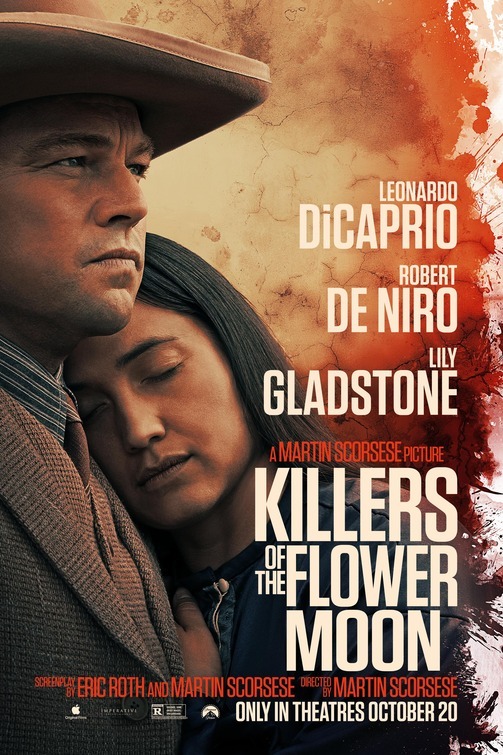
View On WordPress
#2023#Barry Corbin#Brendan Fraser#Cara Jade Myers#Charlie Musselwhite#Chase Parker#Cinema#Crime#David Grann#Drama#Eric Parkinson#Eric Roth#Everett Waller#Gabriel Casdorph#Gary Basaraba#Gene Jones#History#J.C. Mackenzie#Jack White#Janae Collins#Jason Isbell#Jesse Plemons#Jillian Dion#John Gibbs#John Lithgow#Katherine Willis#Killers of the Flower Moon#Larry Sellers#Leonardo DiCaprio#Lily Gladstone
1 note
·
View note
Text
Killers of the Flower Moon,' AKA The Dusty, Bloody, Roaring '20s
Killers of the Flower Moon,' AKA The Dusty, Bloody, Roaring '20s
Mmm, this one’s a killa (CREDIT: Apple/Paramount Pictures) Starring: Leonardo DiCaprio, Lily Gladstone, Robert De Niro, Jesse Plemons, Tantoo Cardinal, John Lithgow, Brendan Fraser, Cara Jade Myers, JaNae Collins, Jillian Dion, Jason Isbell, William Belleau, Louis Cancelmi, Scott Shepherd Director: Martin Scorsese Running Time: 206 Minutes Rating: R for Disturbingly Widespread and Remorseless…

View On WordPress
#Brendan Fraser#Cara Jade Myers#JaNae Collins#Jason Isbell#Jesse Plemons#Jillian Dion#John Lithgow#Killers of the Flower Moon#Leonardo DiCaprio#Lily Gladstone#Louis Cancelmi#Martin Scorsese#Robert De Niro#Scott Shepherd#Tantoo Cardinal#William Belleau
0 notes
Text
Killers of the Flower Moon (15): Scorsese's masterwork shows greed on an epic scale.
#onemannsmovies #filmreview of “Killers of the Flower Moon” (2023). #LFF. Scorsese epic with De Niro and DiCaprio on superb form. See it! 5/5.
A One Mann’s Movies review of “Killers of the Flower Moon” (2023) (from the London Film Festival). OK, so here comes one of the BIG Oscar hopefuls. “Killers of the Flower Moon” is a bladder-testing three and a half hours, but is magnificant: a widescreen $200 million epic that truly deserves to be seen on the big screen. It’s movie-making at its most decadent. Bob the Movie Man Rating: Plot…

View On WordPress
#KillersOfTheFlowerMoon#bob-the-movie-man#Brendan Fraser#Cara Jade Myers#Cinema#David Grann#Eric Roth#Film#film review#Jesse Plemons#Jillian Dion#John Lithgow#Leonardo DiCaprio#Lily Gladstone#Martin Scorsese#Movie#Movie Review#One Man&039;s Movies#One Mann&039;s Movies#onemannsmovies#onemansmovies#Review#Robert De Niro#Rodrigo Prieto#Tantoo Cardinal#Tommy Schultz#Ty Mitchell
0 notes
Text
New Trailer: “Killers of the Flower Moon"
New Trailer: “Killers of the Flower Moon” The second official trailer has been released for Martin Scorsese’s $200 million-budgeted epic period drama “Killers of the Flower Moon” which boasts a 206 minute runtime. The story unfolds in 1920s Oklahoma and depicts the serial murder of members of the oil-wealthy Osage Nation – a string of brutal crimes that came to be known as the ‘Reign of…

View On WordPress
#apple plus#Brendan Fraser#Cara Jade Myers#JaNae Collins#Jesse Plemons#Jillian Dion#John Lithgow#Killers of the Flower Moon#Killers of the Flower Moon trailer#Leonardo DiCaprio#Lily Gladstone#martin scorsese#Robert de niro#Scott Shepherd#Tantoo Cardinal#Tatanka Means#trailer#William Belleau
0 notes
Link
Leonardo DiCaprio, Robert De Niro, Jesse Plemons, Lily Gladstone, Tantoo Cardinal, Brendan Fraser, John Lithgow, Cara Jade Myers, Jillian Dion, Janae Collins, William Belleau, Scott Shepherd, Jason Isbell, Louis Cancelmi,
#Leonardo DiCaprio#Robert De Niro#Jesse Plemons#Lily Gladstone#Tantoo Cardinal#Brendan Fraser#John Lithgow#Cara Jade Myers#Jillian Dion#Janae Collins#William Belleau#Scott Shepherd#Jason Isbell#Louis Cancelmi#Tatanka Means#Michael Abbot Jr#Barry Corbin#Sturgill Simpson#Pat Healy#Eric Parkinson#Samuel French#Gary Basaraba#Yancey Red Corn#Nick W. Nicholson#Terry Allen#Jo Harvey Allen#Alexis Ann#James Carroll#Gabriel Casdorph#Delani Chambers
0 notes